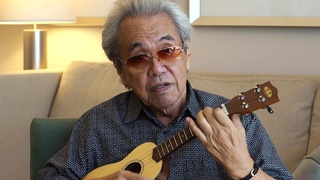Interviews
Dream of "taiko" in the English dictionary
My dream are “taiko” word become English, [to] find in the English dictionary. “Taiko.” When I started taiko, everyone said, “What is taiko? What is taiko? What’s the taiko?” But nowadays you know taiko. You’re not Japanese, but you know taiko. So, it’s a big difference in thirty-something years. So, my…from now on, my work is through thirty-something experience, taiko in the United States. So I have two culture: Japanese taiko and the United States taiko.
Date: January 27, 2005
Location: California, US
Interviewer: Art Hansen, Sojin Kim
Contributed by: Watase Media Arts Center, Japanese American National Museum.





